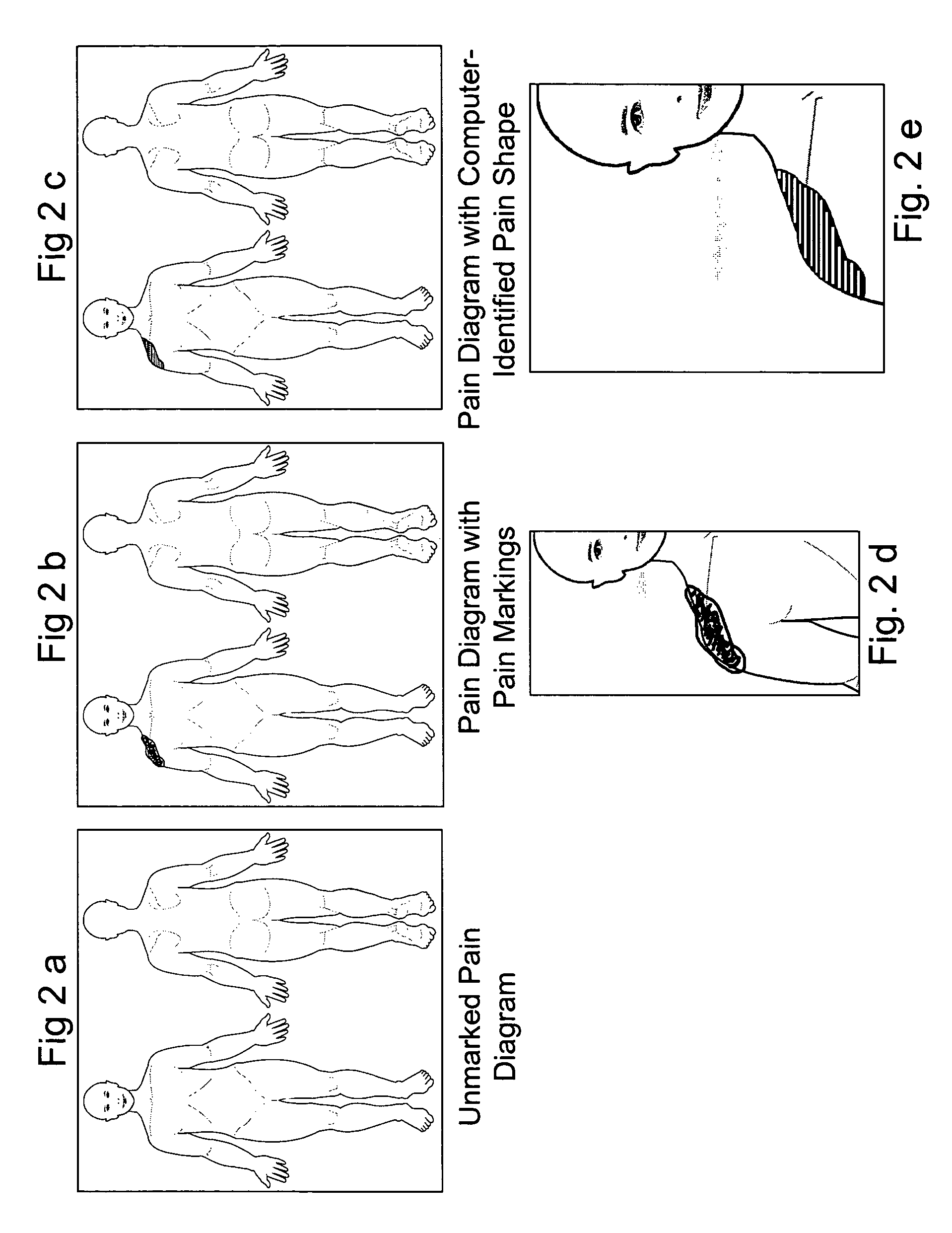Method for analysis of pain images
a pain diagram and analysis method technology, applied in the field of recording and analyzing pain diagrams, can solve the problems of large correlation between pain measured and larger areas, lack of diagnostic information or analysis of paper pain diagrams used in ordinary clinical practice, and limited value of previous attempts to automate analysis of pain diagrams
- Summary
- Abstract
- Description
- Claims
- Application Information
AI Technical Summary
Problems solved by technology
Method used
Image
Examples
Embodiment Construction
[0087]The present invention relates to a method for recording and analyzing the locations where pain is experienced by a patient, as recorded by a patient or physician drawing on a body image.
Definitions of Key Terms:
[0088]Affine Transformation: A mathematical transformation that is a combination of single transformations such as translation or rotation or reflection on an axis. In a typical affine transformation, given a matrix M, and a Vector V in homogeneous coordinates (e.g. V=(X Y 1)′), then V′=MV where V′ is the new vector in the transformed space.[0089]Centroid and Meta-Centroid: As it applies to visual images, a centroid represents the mean position of the points making up a visual object. A meta-centroid is the point representing the mean position of a group of visual objects, and may be calculated as the mean position of the individual un-weighted centroids or as the mean position of all the points making up the group of visual objects.[0090]Composite Image: An image that ...
PUM
| Property | Measurement | Unit |
|---|---|---|
| pain shape | aaaaa | aaaaa |
| distance | aaaaa | aaaaa |
| distances | aaaaa | aaaaa |
Abstract
Description
Claims
Application Information
 Login to View More
Login to View More - R&D
- Intellectual Property
- Life Sciences
- Materials
- Tech Scout
- Unparalleled Data Quality
- Higher Quality Content
- 60% Fewer Hallucinations
Browse by: Latest US Patents, China's latest patents, Technical Efficacy Thesaurus, Application Domain, Technology Topic, Popular Technical Reports.
© 2025 PatSnap. All rights reserved.Legal|Privacy policy|Modern Slavery Act Transparency Statement|Sitemap|About US| Contact US: help@patsnap.com



